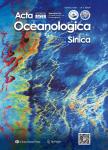The study on the bottom friction and the breaking coefficient for typhoon waves in radial sand ridges—the Lanshayang Channel as an example
The study on the bottom friction and the breaking coefficient for typhoon waves in radial sand ridges—the Lanshayang Channel as an example作者机构:College of Harbor Coastal and Offshore Engineering Hohai University The Development Office of Yangtze River in Tongzhou District River and Harbor DepartmentNanjing Hydraulic Research Institute
出 版 物:《Acta Oceanologica Sinica》 (海洋学报(英文版))
年 卷 期:2015年第34卷第3期
页 面:99-107页
核心收录:
学科分类:0710[理学-生物学] 07[理学] 0908[农学-水产] 0707[理学-海洋科学] 08[工学] 0814[工学-土木工程]
基 金:The National High Technology Research and Development Program(863 Program)of China under contract No.2012AA112509 the National Natural Science Fundation of China under contract No.41373112 the Open Research Foundation from the State Key Laboratory of Hydrology-Water Resources and Hydraulic Engineering,Nanjing Hydraulic Research Institute under contract No.2012491311
主 题:typhoon wave radial sand ridges RSR mud damping effects varying Collins coefficient with the water level method wave breaking coefficient
摘 要:Owing to the interactions among the complex terrain, bottom materials, and the complicate hydrodynam-ics, typhoon waves show special characteristics as big waves appeared at the high water level (HWL) and small waves emerged at low and middle water levels (LWL and MWL) in radial sand ridges (RSR). It is as-sumed that the mud damping, sandy bed friction and wave breaking effects have a great influence on the typhoon wave propagation in this area. Under the low wave energy, a mud layer will form and transport into the shallow area, thus the mud damping effects dominate at the LWL and the MWL. And high Collins coef-ficient (c around 1) can be applied to computing the damping effects at the LWL and the MWL. But under the high wave energy, the bottom sediment will be stirred and suspended, and then the damping effects disappear at the HWL. Thus the varying Collins coefficient with the water level method (VCWL) is imple-mented into the SWAN to model the typhoon wave process in the Lanshayang Channel (LSYC) of the RSR, the observed wave data under “Winnie (“9711) typhoon was used as validation. The results show that the typhoon wave in the RSR area is able to be simulated by the VCWL method concisely, and a constant wave breaking coefficient (γ) equaling 0.78 is better for the RSR where wide tidal flats and gentle bed slopes exist.



